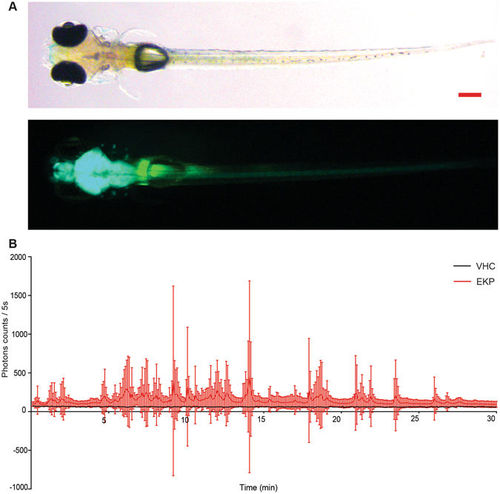- Title
-
Inhibition of glutamate decarboxylase (GAD) by ethyl ketopentenoate (EKP) induces treatment-resistant epileptic seizures in zebrafish
- Authors
- Zhang, Y., Vanmeert, M., Siekierska, A., Ny, A., John, J., Callewaert, G., Lescrinier, E., Dehaen, W., de Witte, P.A.M., Kaminski, R.M.
- Source
- Full text @ Sci. Rep.

ZFIN is incorporating published figure images and captions as part of an ongoing project. Figures from some publications have not yet been curated, or are not available for display because of copyright restrictions. |

ZFIN is incorporating published figure images and captions as part of an ongoing project. Figures from some publications have not yet been curated, or are not available for display because of copyright restrictions. PHENOTYPE:
|

ZFIN is incorporating published figure images and captions as part of an ongoing project. Figures from some publications have not yet been curated, or are not available for display because of copyright restrictions. |
|
Neuroluminescence recording of Tg(elavl3:GA) zebrafish exposed to EKP. (A) Bright field (upper) and fluorescence (lower) micrographs of 7 dpf Tg(elavl3:GA) larva (scale bar: 0.20 mm) (B) Photon emission of 7 dpf larvae exposed to VHC (black line) or EKP (400 µM) (red line), after a 20 h incubation to CLZN-h (40 µM) exposure during a 30-min recording period. The total photon emission (y-axis) is counted per 5-second (sec) interval (x-axis). Results are expressed as mean ± s.d. of 18 independent experiments. For each experiment a group of three larvae was used. |

ZFIN is incorporating published figure images and captions as part of an ongoing project. Figures from some publications have not yet been curated, or are not available for display because of copyright restrictions. |

